Which Fat Is The Best For Making Chocolate Chip Cookies?
Because butter isn't the only type of fat you should be making your chocolate chip cookies with. #BFChocolateChipCookie
Welcome to BuzzFeed's Best Chocolate Chip Cookie Guide. Over the past few weeks we've baked over 400 cookies — testing every possible variable from dough temperature to sugar variety in an attempt to find the best possible formula. You can get an overview of the entire experiment here.
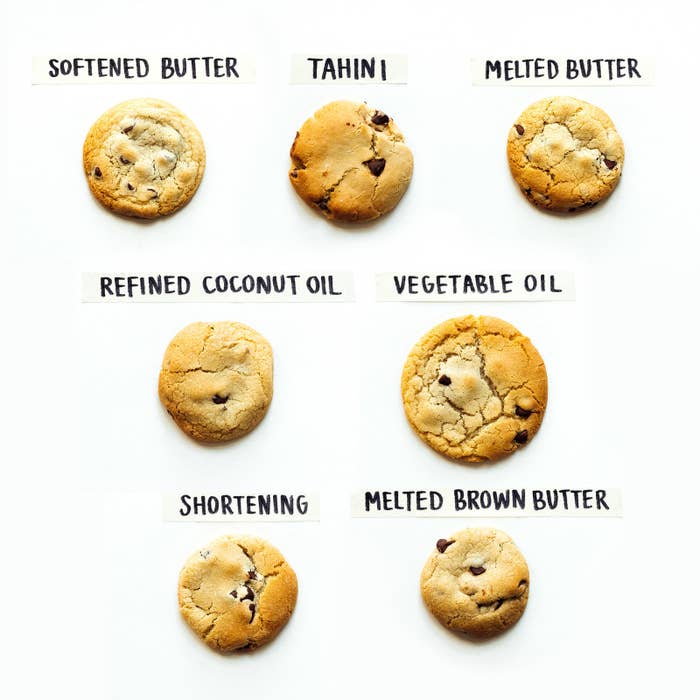
Fat is flavor. If you've watched any semblance of a cooking show, cooked with any sort of fat, or, well, enjoy the beauty that IS food, you know this to be true. Not opinion, nonnegotiable: It is fact.
Fat affects a cookie in a multifold manner. There's the flavor, of course. But there's also the spread of the cookie, not to mention the aeration and subsequent leavening that results from creaming your fat source with sugar. Most conventional recipes begin with this step of mechanical leavening, so in a manner of speaking, the fat sets the tone for the cookie you'll end up making.
And because fat plays such a crucial role in baking, chefs often have their fat of choice they stick to when making cookies. "While butter is best known for it’s rich dairy flavor, it's also a wonderful tenderizer and leavener," says Zac Young, pastry director for Craveable Hospitality Group. "The fat acts to grease and shorten the strands of gluten — inhibiting their development — while the water content in butter (15 to 20%) acts as a natural leavening agent converting to steam once heated in the oven. Of course, there are nondairy substitutes, but I prefer butter, solely based on flavor."
So, to better understand how your choice of fat will affect your chocolate chip cookies, we decided to test seven batches of cookies and compare them in a side-by-side taste test using different fats. We stuck to seven of the most popular fats that professional bakers swear by and kept all of the other variables the same. We used the classic Nestlé Toll House cookie formula as our base recipe and simply swapped out the fat source, keeping the quantity the same.
If you can't see the sign-up box above, just enter your email address here.
Here are the seven fats we tested and how they affected the cookie:
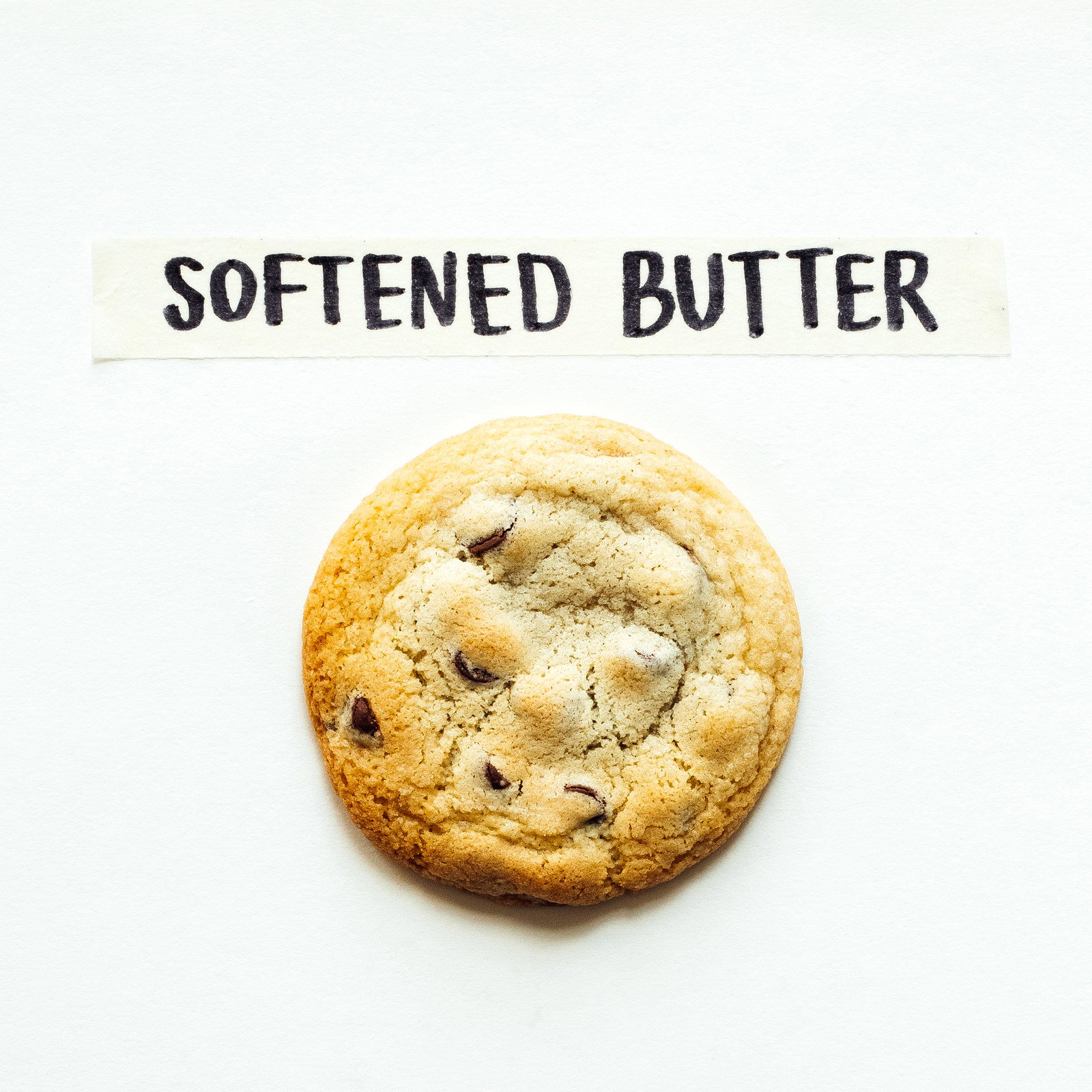
The Science / What We're Expecting: What most people don't realize is that butter is, essentially, water and fat emulsified. Because of its sensitive composition, it can melt at the drop of a hat if kept a touch too warm. So when your recipe calls for "softened butter," it's really asking for room-temperature butter: solid at room temperature, but capable of holding air when whipped. At this semisolid stage, the butter will hold its shape undisturbed but is equally pliable when it needs to be.
Ideally, you want your butter to get to room temperature — about 68–70° — naturally before beginning the creaming process. That way, when you do beat your butter and sugar together to create the creaming effect, the interaction between the coarse sugar crystals and the softened butter create air pockets that'll add a certain inimitable lightness to your dough. Not to mention, using softened butter will help stall the formation of those pesky gluten bonds that can make your cookie tough.
But most importantly, butter = flavor. At 80–83% butterfat and 3–5% milk proteins, it'll give your cookies a rich dairy flavor that you just can't get from a tub of Crisco
The Test: Use 100% softened butter in the cookie recipe. (This is what is called for in the control recipe.)
The Results: As expected, these cookies came out perfect: nothing surprising, exciting, or noteworthy to mention. They were soft and pliable with a crisp exterior, and they browned and spread evenly. The flavor was rich with a subtle dairy note that didn't overpower the dough at all.
Overall Rating: 7/10
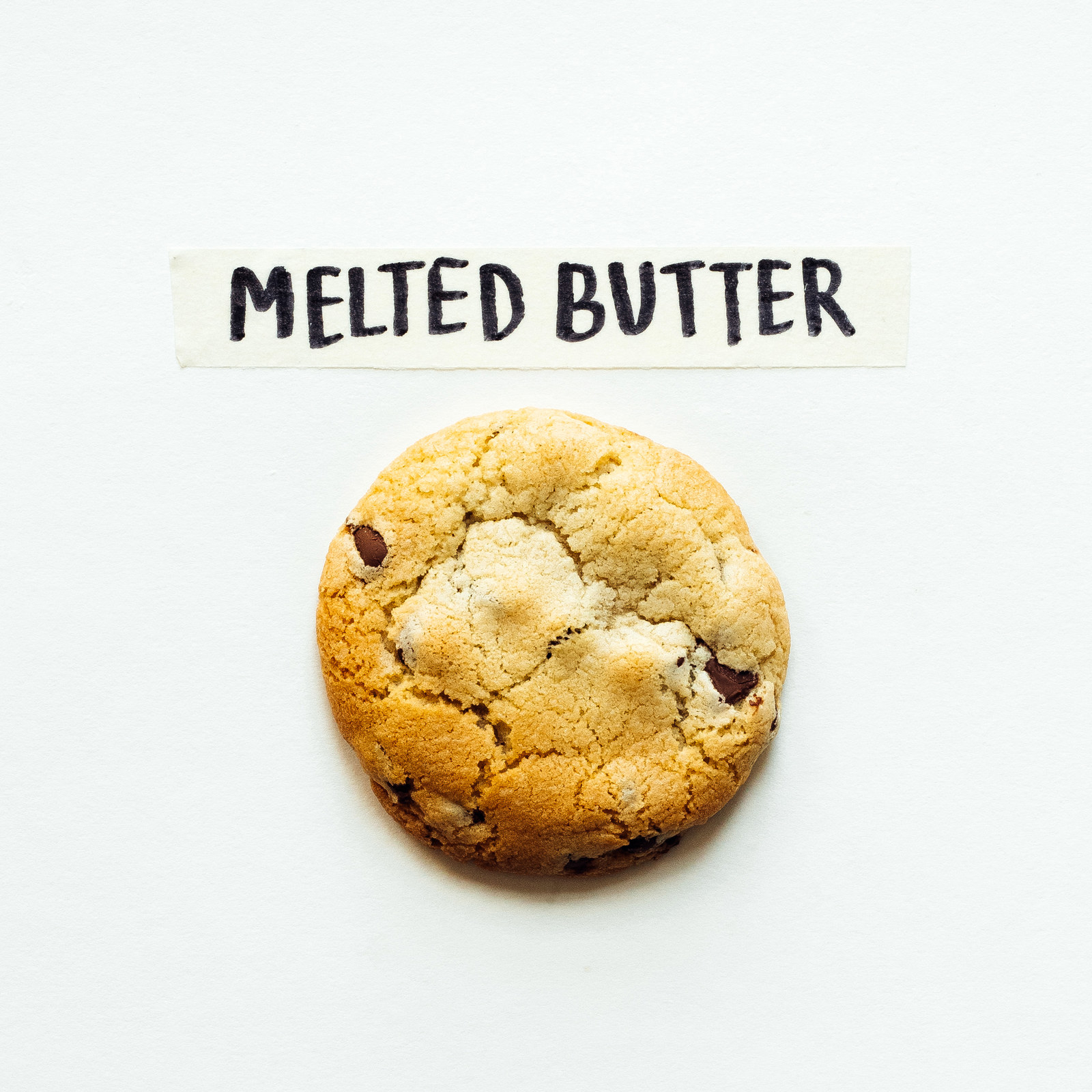
The Science / What We're Expecting: Traditional cookie-baking wisdom states that softened butter is a must. In reality, though, there's a large following for the use of melted butter. First of all, this means you can bake a batch of cookies without having to plan ahead and soften your butter hours in advance. This also means that in those all-too-common instances of microwaving your butter past the point of "softening," you can still use it.
Using melted butter (supposedly) results in cookies that are chewier and crispier than what you might be used to. Naturally, this may mean a denser cookie as well. A warmer fat also means more spread, as the butter won't take as long to melt in the oven.
The Test: Swap the softened butter, originally in the recipe, for melted butter. All other variables kept as-is.
The Results: These cookies were surprisingly similar to the ones made with softened butter. They didn't spread too much or pool their fat at all, and it made preparing the dough significantly easier. The flavor was unchanged, and the appearance was fairly similar as well. They were a bit more cracked and less rippled, but no major differences.
Overall Rating: 7/10
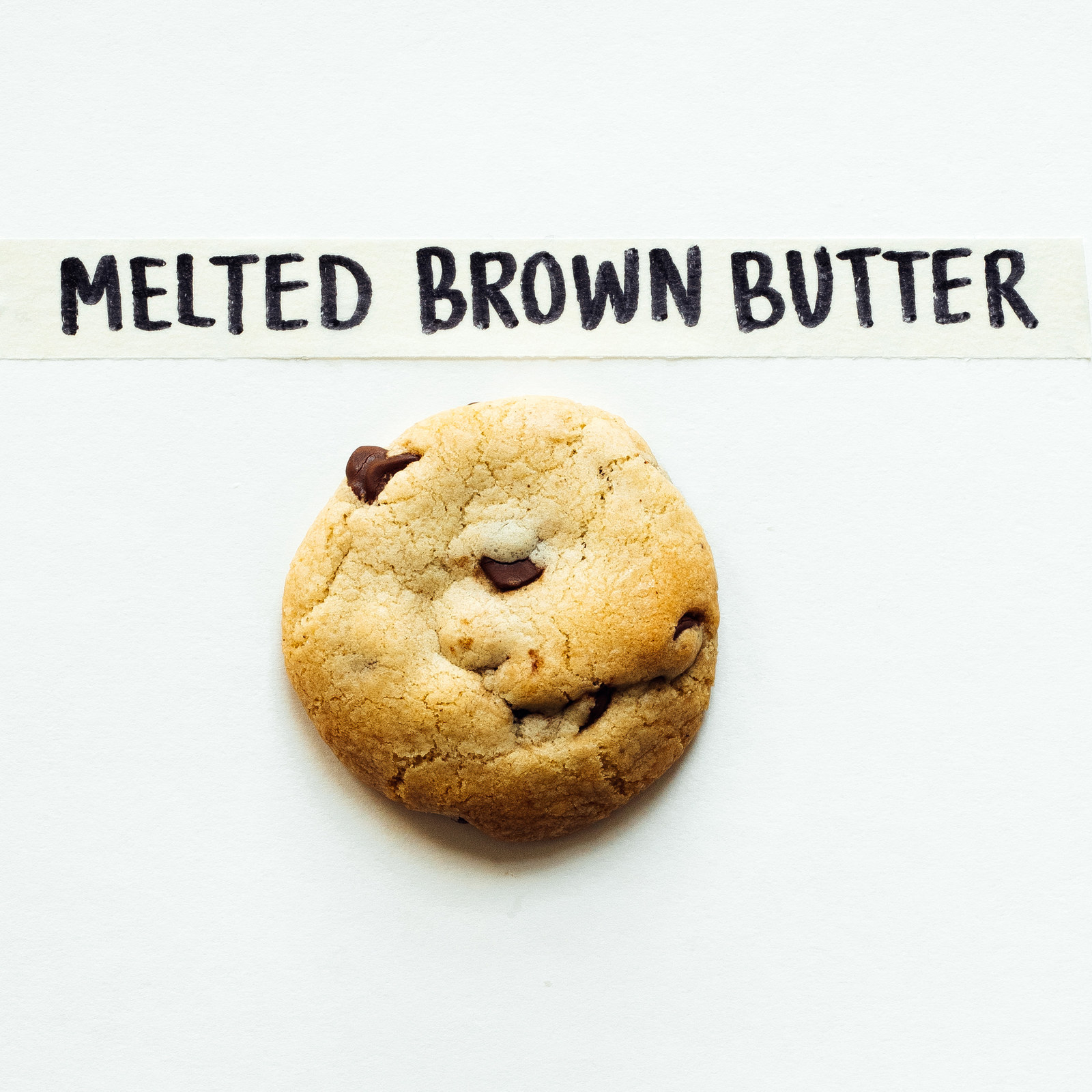
The Science / What We're Expecting: We said before that melted butter has a fan following. What we didn't say, though, is that brown butter has an almost cult-like following.
Essentially, browning butter is just taking melted butter to the next level. Instead of simply liquefying your butter, you want to boil it. As you do so, you'll see the milk solids gravitate toward the bottom of the pan and begin to toast. Meanwhile, a layer of foam will form on top. Now, you're not just using those precious solids at the bottom of the pan, though. Oh, no. You're using it all. So once you see that brown color you've been waiting for, you'll transfer the mixture off the heat to stop the cooking process, and at this point, it's ready to use.
It sounds like effort, but the payoff may be worth it. What you'll supposedly end up with? A deep, rich, almost nutty cookie. Of course, you're losing moisture by heating your butter, so this may make for a drier cookie as well.
The Test: Swap the softened butter, originally in the recipe, for melted brown butter. All other variables kept as-is.
The Results: Because some of the water evaporated during the browning process, these cookies came out dry and bread-like. They didn't spread very much, looked a bit like hockey pucks, and had a tough texture. The flavor was nice (nutty and rich), but the lack of water drastically changed the texture of the cookie.
Overall Rating: 4/10

The Science / What We're Expecting: Plunging your spreader into a tub of vegetable shortening can be a bit like opening the door to Narnia: you really, truly have no idea what lies within. Beyond knowing that shortening contains fat, most people don't know what shortening is actually made of.
In the case of Crisco, or hydrogenated vegetable shortening, it's primarily made from a mix of soybean, cottonseed (not typical), and/or palm oils. Hydrogenating the oils allows them to remain solid at room temperature while removing any moisture present. What does this mean? Well, without moisture, shortening is 100% fat and, therefore, creates no steam in the baking process. This means a higher melting point of the fat and less gluten production.
If you're a fan of soft cookies, shortening might be the route you choose to take. Your cookies might be softer and more tender, but they also might be a bit bland. By using commercial vegetable shortening, you might just be missing out on those rich dairy notes that butter tends to bring along to the party.
The Test: Swap the softened butter, originally in the recipe, for shortening. All other variables kept as-is.
The Results: These cookies had a slightly chewier texture compared to the ones made with butter, but the flavor was rather dull. They were missing the rich dairy flavor that butter provides and were rather one-noted. They did have a wonderfully chewy, soft, and somewhat pliable texture (somewhat similar to gingersnaps), but the flavor was just not up to par. (The tops were also strangely smooth.)
Overall Rating: 5/10
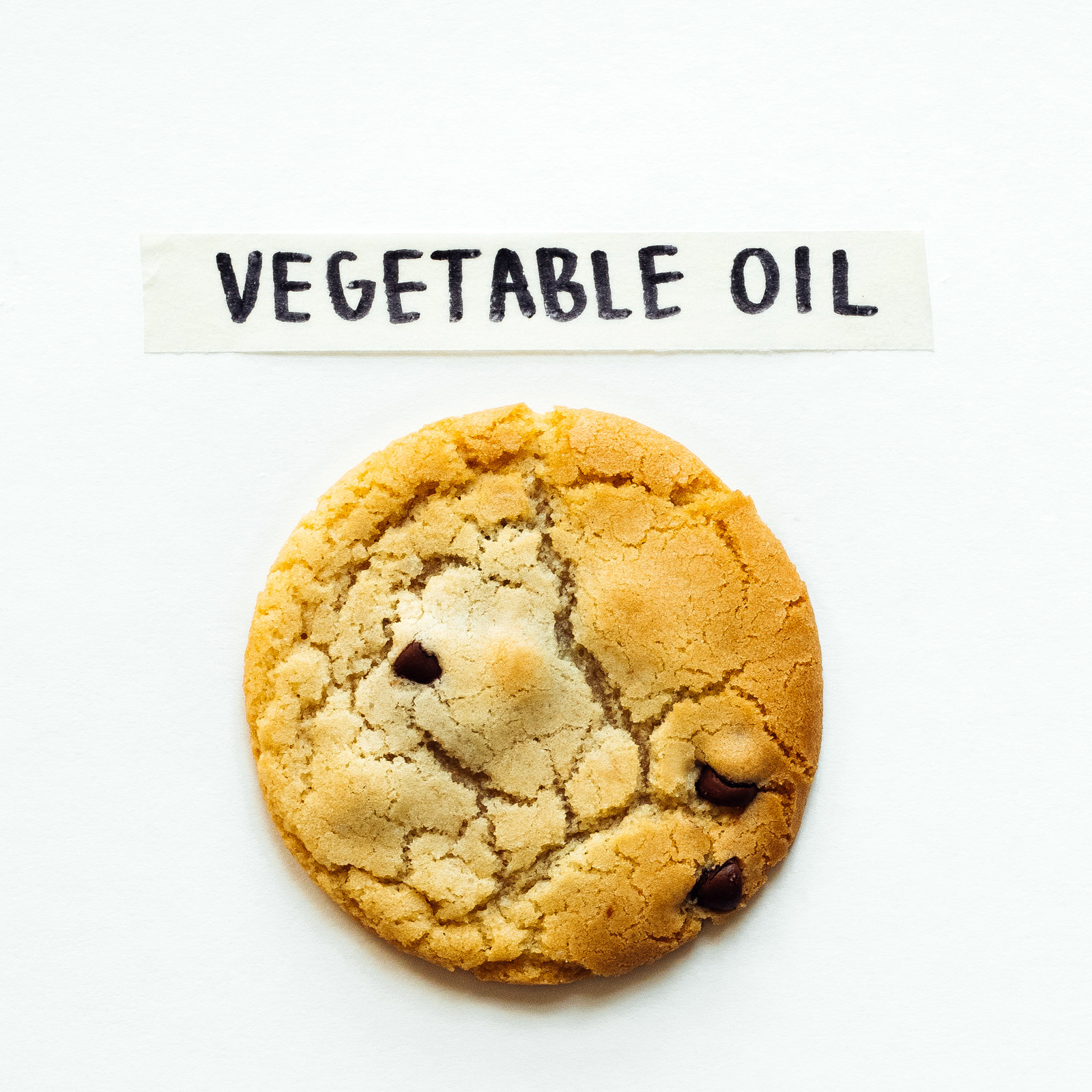
The Science / What We're Expecting: Vegetable oil is rarely a popular choice for cookie bakers. Sure, it contains a higher proportion of unsaturated fats than the saturated fat–laden butter, but there's no guarantee that that'll give you a flavor you'd like. Then there's the question of composition.
While butter contains air pockets that help it retain its shape, oil is more compact. You can't really alter it from its original state. Not to mention, using a flavorful oil such as olive oil in a cookie might give you a baked product that's just a little on the funkier side.
Naturally, you can expect a softer dough. Then again, there's a good chance your cookies may have some spreading issues, simply because your oil is already in a liquid state. If you come out with a crumblier cookie that's coated in a sheen of something you can't quite put your finger on, don't be surprised. It's just the oil, showing its true colors and starting to pool.
The Test: Swap the softened butter, originally in the recipe, for vegetable oil. All other variables kept as-is.
The Results: These cookies came out stunning with beautiful cracks. They spread into perfect, somewhat flat circles that looked almost like sugar cookies. The flavor was somewhat lacking, but the texture was crisp yet chewy and perfectly pliable. This was a pleasant surprise, and if there's a way to make up for the lack of dairy flavor, this might be a winner.
Overall Rating: 8/10
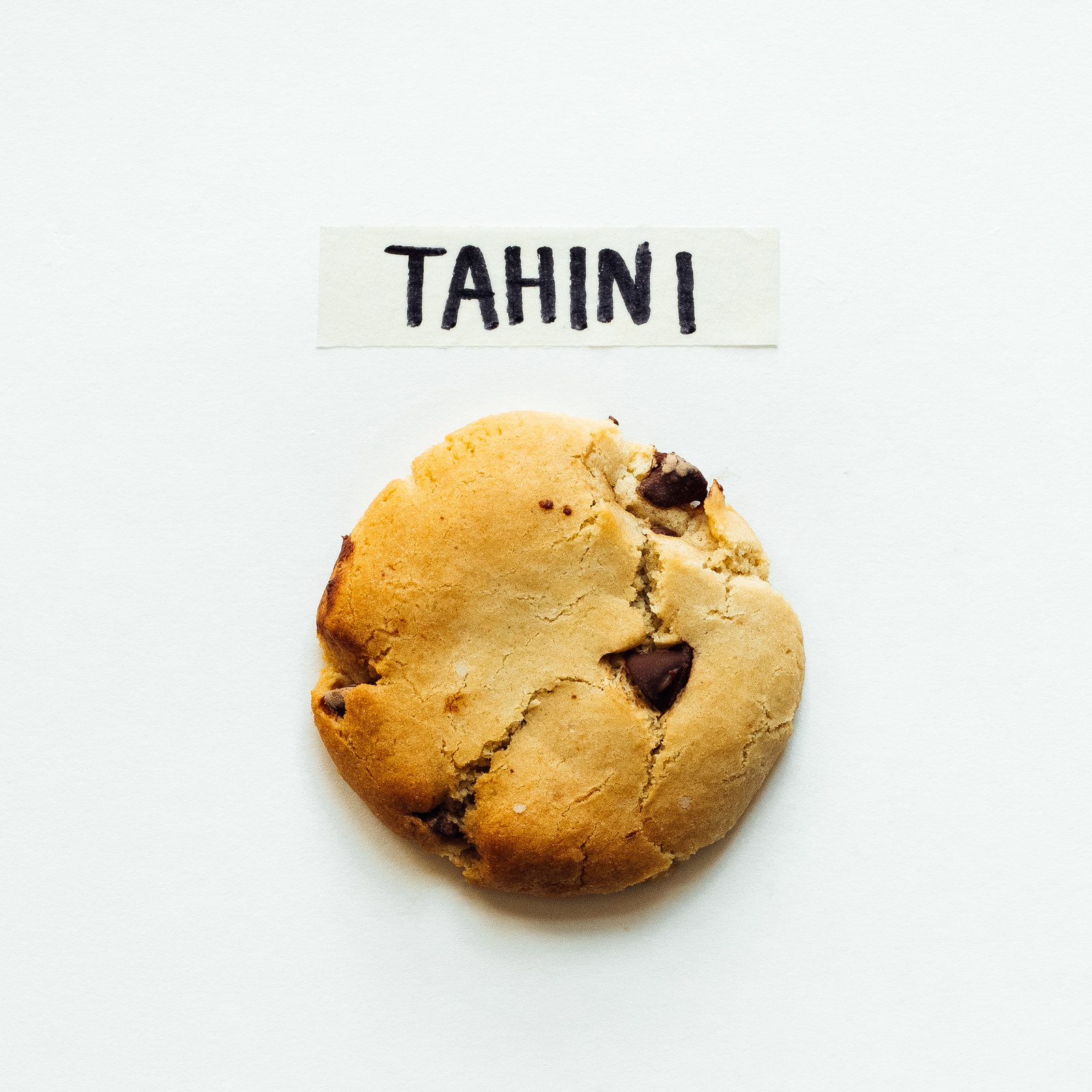
The Science / What We're Expecting: If the word tahini is unfamiliar to you, that's alright. It still is for many home cooks. Made by soaking, crushing, and grinding sesame seeds, this Middle Eastern important has become commonplace, mostly as the base for a well-made, tangy hummus. What most home cooks don't know, though, is that the paste has carved its space somewhere else, too: in chocolate chip cookies. Because of its inherent nuttiness and its balance of salty, savory, and sweet elements, it can give your cookies a unique richness that you might not have known you were searching for all along.
Some people like to mix it in, using a combination of butter and tahini, so that you still get that reliable melt that you're used to. Others, gutsier maybe, go in whole-hog and say a quick Hail Mary, hoping that tahini will do the trick. It's a little like cookie roulette, to be honest. But don't say we didn't warn you first.
The Test: Swap the softened butter, originally in the recipe, for tahini. All other variables kept as-is.
The Results: Not good. The texture of the cookies were very tough, dry, and bread-like. They didn't spread very much and baked into hard pucks of dough. While the flavor of the tahini was nice, the texture was absolutely awful. Going with 100% tahini is a hard no from us.
Overall Rating: 0/10
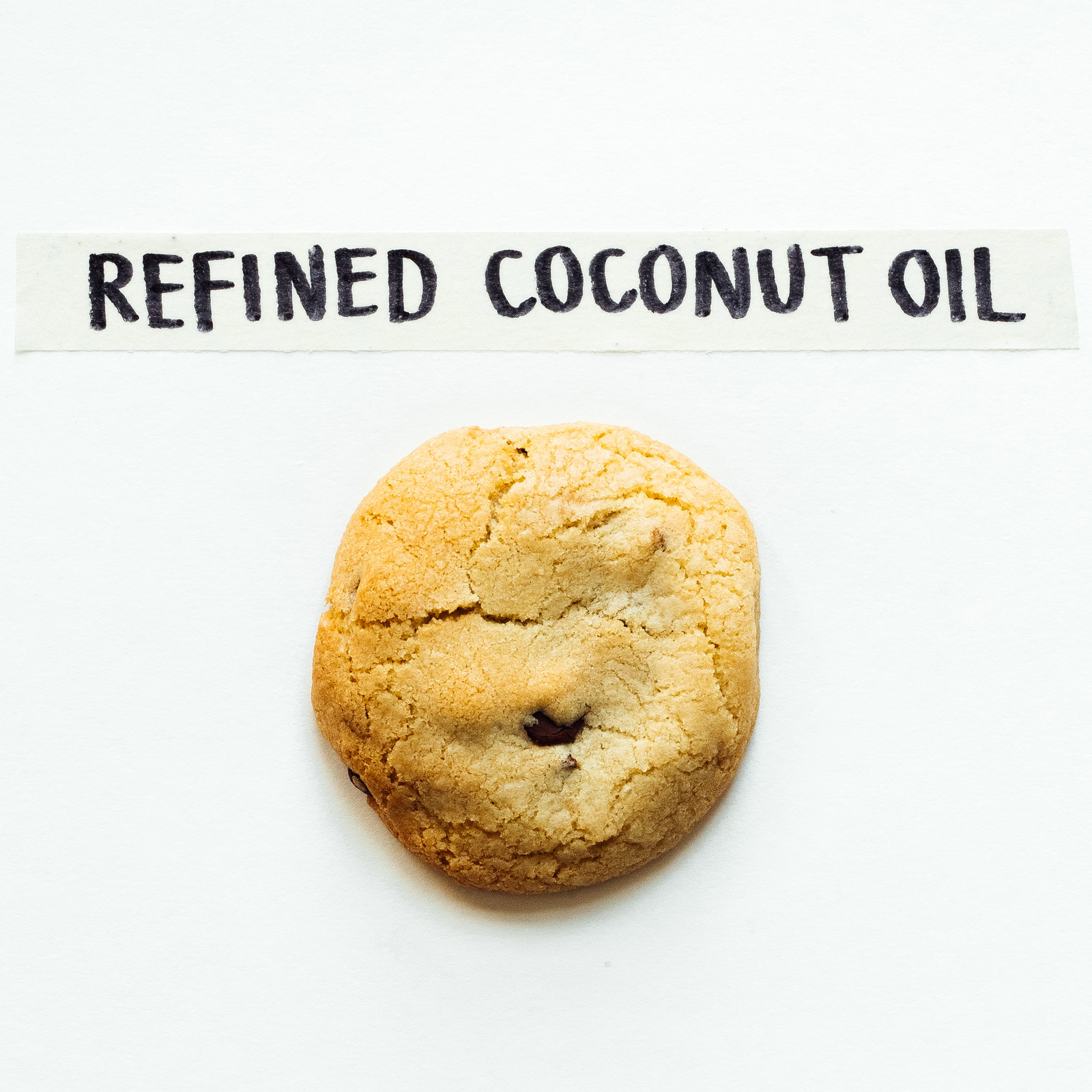
The Science / What We're Expecting: Coconut oil has a tiny leg up over other vegetable oils. Because of its ability to remain solid below certain temperatures, it has a certain versatility that other oils don't and it acts more similarly to butter. It lends itself more readily to substitution than you might think. There's another catch, too. Using the refined variety, taken from dried coconut meat, means that you get all of the fat without all of that overwhelming coconut flavor. Sounds like it could work, right?
The Test: Swap the softened butter, originally in the recipe, for refined coconut oil. All other variables kept as-is.
The Results: These cookies were dry and more crumbly than the ones made with butter. You couldn't taste the coconut flavor, but the texture was definitely off. The dough itself seemed dry while making it, and the final baked cookies were no different. The lack of moisture in the coconut oil just didn't work.
Overall Rating: 3/10
The Biggest Takeaways:
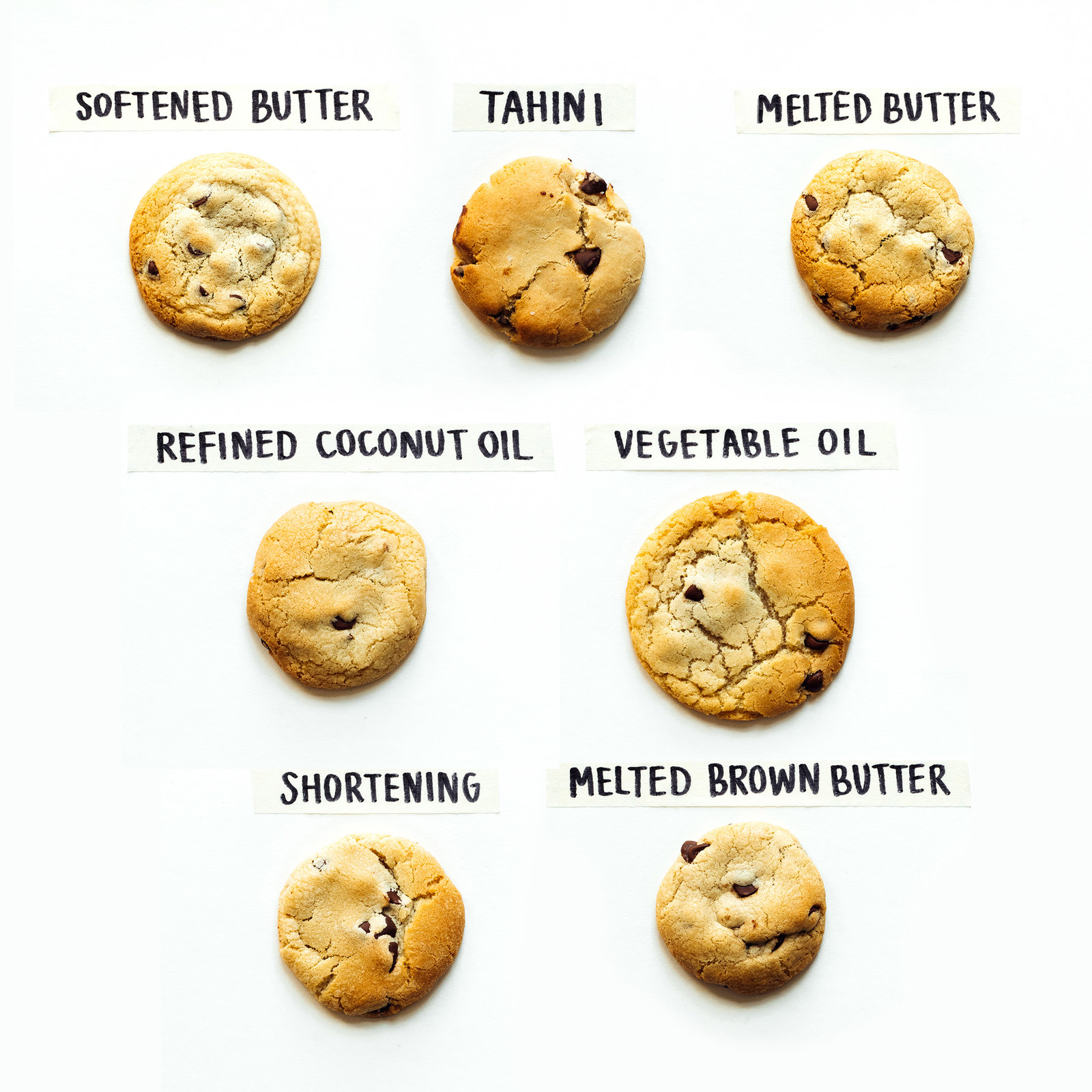
What We Learned: Fat not only gives cookies favor, but significantly impacts their spread and texture — so choose wisely. Many fat sources also contain water (like butter), so you can't just swap one for the other without making some tweaks to the recipe.
The Biggest Takeaways: When it comes to picking out which fat you should use to make your chocolate chip cookies, keep these things in mind:
1. Fat is flavor: Fat carries flavor and coats your tongue, so you should treat it like a flavoring agent in your cookies.
2. Butter is both fat and moisture: Butter is about 15% water, and that moisture plays a big role in a cookie's composition — so you can't just swap it out for a fat source with 0% water and think it'll work just the same. (It won't.)
3. People who say you can swap butter with tahini are... mistaken: Sorry, this just didn't work! (But maybe it's just our fault! Who knows!)
4. Vegetable oil can actually be used to make excellent cookies: As weird as it may sound, the cookies made with 100% vegetable oil were some of our favorites.
5. Using a combination of fats instead of just one may give you more control: While the vegetable oil cookies looked beautiful, they could have benefited from some additional flavor from butter. This way, you can get the best of both worlds: the ideal texture with the best flavor.
This post is part of BuzzFeed's Best Chocolate Chip Cookie Guide. To read through the entire experiment, click through the links below:
Main Post | Sugar Type | Flour Type | Chocolate Type | Leavening Agent | Dough Age + Temperature | BuzzFeed's Best Chocolate Chip Cookie Recipe

